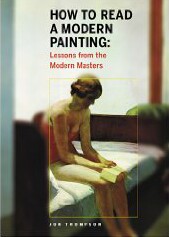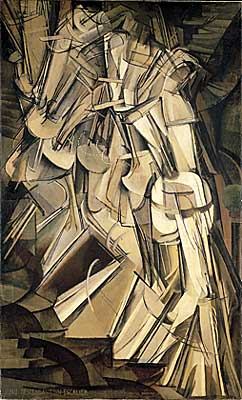Book Review: How To Read a Modern Painting: Lessons from the Modern Masters

A year ago I picked up the book How To Read a Modern Painting: Lessons from the Modern Masters by Jon Thompson. Published December 2006, the book describes the historical context and significance of 180 paintings created between 1855 and 1986. The paintings are presented in chronological order beginning with the Gustave Courbet 1855 painting The Artist's Studio and concluding with Andy Warhol's Camouflage Self-Portrait from 1986. In addition to the book's featured paintings, there are also approximately 60 additional paintings that serve as reference material for the book's featured paintings.
The book is very well organized and provides the following supplemental materials:
- Bibliography - a list of reference books
- List of collections - an alphabetical listing of the source of the paintings reviewed in the book. For example, looking under the heading for Chicago, The Art Institute of Chicago, the index identifies the 6 paintings from the book that are in the Art Institute's collection.
- Index - alphabetical listing of the artists featured or referenced in the book
The book's description of itself is as follows:
Modern paintings, although extremely popular, are often challenging for the casual observer to comprehend. In this volume, a natural companion to How to Read a Painting author Jon Thompson guides the reader through over 200 paintings by 140 artists, from Bonnard and Basquiat to Warhol and Whistler, exploring the characteristic qualities of each work in the context of the rest of the artist's oeuvre and his main influences.
To satisfy my curiosity as to which painters the author felt were most influential, I tallied up the number of paintings each artist had featured in the book. The following table presents the results of my survey.
Table of Paintings By Artist
Artists with 5 Paintings
|
Artists with 4 Paintings
|
Artists with 3 Paintings
|
Select artists with 2 Paintings
|
Using the number of paintings present as a proxy for artistic influence is an imperfect measure but is easily arrived at.

Nude Descending a Staircase, No. 2
by Marcel Duchamp
I was not surprised to see Pablo Picasso atop the list. I was somewhat surprised that Marcel Duchamp followed Picasso and was tied with Claude Monet at four paintings. Personally my preference is for Duchamp's early cubist oriented work. One of my favorites is Nude Descending a Staircase, No 2, painted in 1912, which is shown at right. I should also point out that while Edward Hopper has only two works of art featured in the book, his painting Hotel Room was selected as the book's cover art. Hopper's other painting included in the book is, of course, Nighthawks
The Award for Best Painting Goes To....
Of the 140 paintings featured, there was no contest for which was my favorite painting. In terms of scope, grandeur, vision, composition, and technical excellence, no painting in this book comes close to Frederic Edwin Church's Cotopaxi which was painted in 1862.
The Final Verdict
In conclusion I would like to say that I highly recommend this book. My single complaint would be that the book should have been done in a larger size so that more detail of the individual paintings would have been visible.
"There is no abstract art. You must always start with something. Afterwards you can remove all traces of reality. There's no danger then, anyway, because the idea of the object will have left an indelible mark. It is what started the artist off, excited his ideas, and stirred up his emotions. Ideas and emotions will in the end be prisoners in his work...."
Pablo Picasso